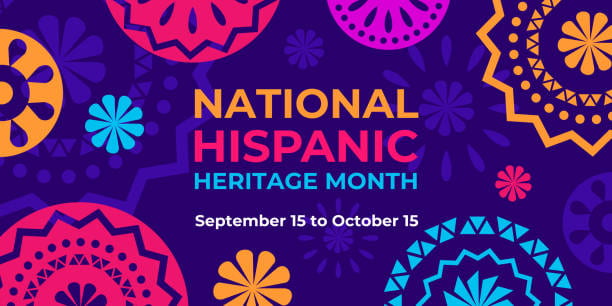In the United States, we observe National Hispanic Heritage Month from September 15 to October 15 by celebrating the histories, cultures and contributions of American citizens whose ancestors came from Spain, Mexico, the Caribbean, and Central and South America. This observance began in 1968 as Hispanic Heritage Week under President Lyndon Johnson, and later was expanded by President Ronald Reagan in 1988 to cover a 30-day period starting on September 15 and ending on October 15. These dates are significant because they include the anniversaries of independence for the Latin American countries of Costa Rica, Guatemala, Honduras, and Nicaragua (all on September 15th), and include the independence days of Mexico and Chile (on September 16th).
We celebrate by paying tribute to the generations of Hispanic Americans who have positively influenced and enriched our nation and society. We recognize and celebrate the many contributions, diverse cultures, and extensive histories of the American Latino community.
Lately, there has been some confusion as to what label this group uses to describe itself. In the United States, the terms “Hispanic” and “Latino” (or “Latina” for a woman; sometimes written as “Latinx” to be gender-neutral) were adopted in an attempt to loosely group immigrants and their descendants who hail from this part of the world. The terms are often used interchangeably, though the words can convey slightly different connotations. It is important to clarify that the categories refer only to a person’s origin and ancestry. A Latino/a or Hispanic person can be of any race or color.
The Pew Research Center’s National Survey of Latinos (2020) living in the United States found that only three percent self-identify as “Latinx”. “Hispanic” is by far the label preferred, followed by “Latino”, and finally a very small number say that they prefer “Latinx”. Another important finding relates to the awareness of the term. “Latinx” is a relatively new umbrella term on the scene. It has been around for about 20 years, but only recently — in the last five-6 years — has it begun to be used widely in the news media, in pop culture, and by corporations. Universities have used it for awhile, but only about a quarter of the U.S. population indicates that they’ve actually heard the term. Interestingly, the term “Latinx” is relatively unknown to the population it’s meant to describe. Young people, ages 18 to 29, are most likely to be aware of the term as 42 percent indicate that they’ve heard it. The Pew Foundation found, through surveys during the past 15 years, that when it comes to labels that people want to use to describe themselves, they prefer ones using their country of origin. That’s particularly true for immigrants, and for American-born Hispanics or Latinos who are the children of American-born parents. In the third generation, the most common term used references the country of origin, such as Mexican, Dominican, Cuban, or Puerto Rican. And that has held constant over the years.
So, what label do you use? For now, it is safe to say that as long as we respect the culture and honor the heritage, then whether we use Hispanic, Latino/a or Latinx—it’s all good!
For more information and further insight, check out these links:
https://diversity.cornell.edu/our-community/dei-celebration-resources
https://www.britannica.com/story/whats-the-difference-between-hispanic-and-latino
https://www.npr.org/sections/codeswitch/2020/08/11/901398248/hispanic-latino-or-latinx-survey-says
All Blogs are written by Professionals in the fields of Nutrition, Human Development and Diabetes.
